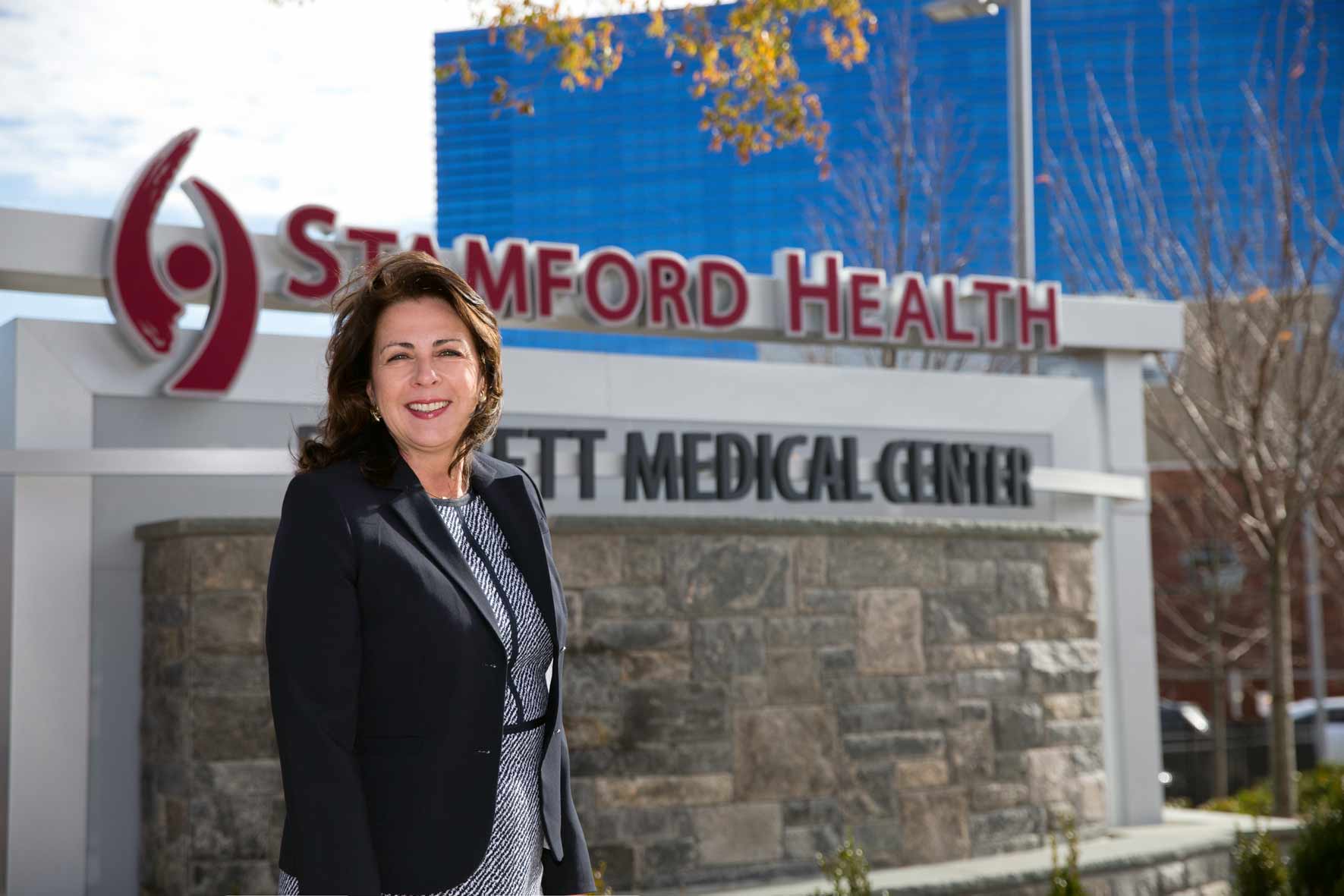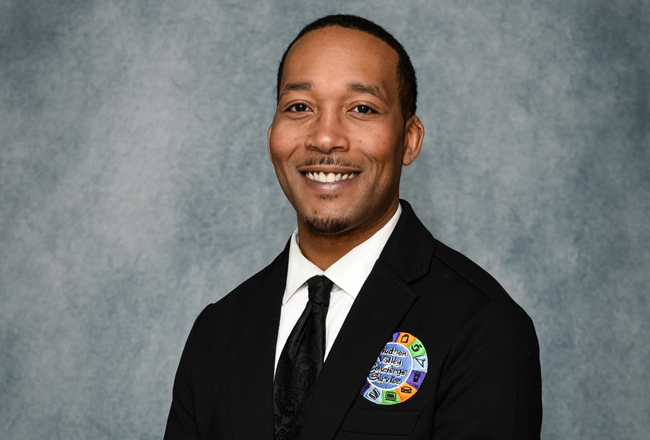As is the case in most of Connecticut, Covid-19-related hospitalizations are down and vaccinations are up at Stamford Health.

But, CEO Kathleen Silard told the Business Journal, the hospital is differentiating itself through its outreach efforts to underserved minority communities ”“ and plans to essentially triple its vaccine administration within the next couple of weeks.
“To date we”™ve administered 42,000 vaccines” at its Bennett Medical Center, Silard told the Business Journal on March 9. “We”™re doing 730 to 930 per day, and more on the weekends when there”™s less parking congestion.”
Stamford has vaccinated over 50% of the state”™s population of those over the age of 75 ”“ the highest percentage in the state, she said ”“ and over 60% of its staff.
“We”™re now getting ready to stand up a second site, which will be able to deliver 3,000 shots a day, depending on the availability of the vaccines,” Silard said, noting that that has been an ongoing concern around the nation.
She declined to say where the second site would be located, but said it would be conveniently located with easy entrances and exits. Stamford Mayor David Martin has indicated the city might add a third site in the future.
As for the news that Connecticut expects 30,000 doses of the newly-approved (NOTE: Not approved yet as of Feb. 26) single-shot Johnson & Johnson vaccine, Silard said, “The more doses there are, the more we can get them into arms. If it”™s here, we”™re going to use it.”
Stamford Health has also teamed with the city and a number of organizations to increase the dissemination of information about, and the delivery of, vaccinations to the city”™s habitually underserved communities.
“I was walking through the ICU during the first wave,” she recalled, “and I saw firsthand how disproportionately impacted Black and Latinx patients were. They were our sickest patients, along with the elderly of course.”
As a result, the hospital has teamed with community health organization Vita, the NAACP, and Building One Community, which works with undocumented people, to make sure those populations do not miss out.
“Together we”™ve done a ton of outreach,” Silard said. “It”™s gone from increasing PPE and testing in those communities, to education about how to be safe ”“ social distancing, wearing a mask, washing your hands and surfaces ”“ to working with churches and other community organizations to help spread the word about the vaccines.
“To have pastors and other people in their communities they know they can trust is so important,” she continued. “For them to say, one-on-one, ”˜This is safe, I took it,”™ makes a very big difference in terms of receptiveness.”
Stamford Health has held 11 “No Barriers” events so far, which focus on those populations and allow them to come in without an appointment, register, and receive a vaccination, regardless of insurance or proper documentation; the state”™s age-based guidelines still apply.
“We stagger them so that they”™re not waiting in line, and we provide interpreters to help them navigate the process if necessary,” Silard noted. “It”™s all a part of our vision to be the most trusted health care partner around.”
The plan is to offer “No Barriers” events every two weeks, she added. “And there”™s been no wastage of vaccines, which we”™re especially proud of. We get all of them into arms.”
One ongoing concern is that non-Covid patients are still reluctant to come to the hospital for the treatment of other critical conditions like cancer, Silard said.
Breast, colon, and cervical cancer screenings nationwide were down more than 85% last year when compared to the three previous years, she said. “We haven”™t seen that same degree here, but it makes the recent expansion of our relationship with Dana-Farber even more important.”
Stamford Health first joined the Dana-Farber/Brigham and Women”™s Cancer Care Collaborative in 2016. In November, it was announced that that exclusive partnership would be expanded to increase access to Farber experts and resources for patients at Stamford”™s Bennett Cancer Center. All of Stamford”™s physicians and providers have successfully completed programs to be certified by Farber.
Promotion of those efforts can help avoid situations like a recent incident, where one of Stamford”™s physicians saw a prostate cancer patient who hadn”™t been to a doctor in over a year. The patient registered a PSA score of 22 ”“ meaning the cancer was in Stage 2B. “Those are avoidable,” Silard remarked.
She further noted that heart disease diagnoses are down significantly year-over-year due to concerns about going to the doctor or the hospital in the Covid era. “That”™s not because of a decrease in incidence,” Silard said, “but because people are postponing care, which leaves us very concerned.”
Stamford is taking an aggressive approach to that situation, through social media, community outreach, and Silard”™s weekly Zoom conference call with Martin.
More happily, Stamford”™s Covid-related hospitalizations are, as is the case at most of the state”™s hospitals, down significantly. “We had 17 this morning,” she said on Feb. 26, “but we”™ve been in the 10 to 14 range for the last few weeks. I was talking to a colleague at a New York City hospital, and they still have about 600 Covid patients, so I”™m very grateful.”



















